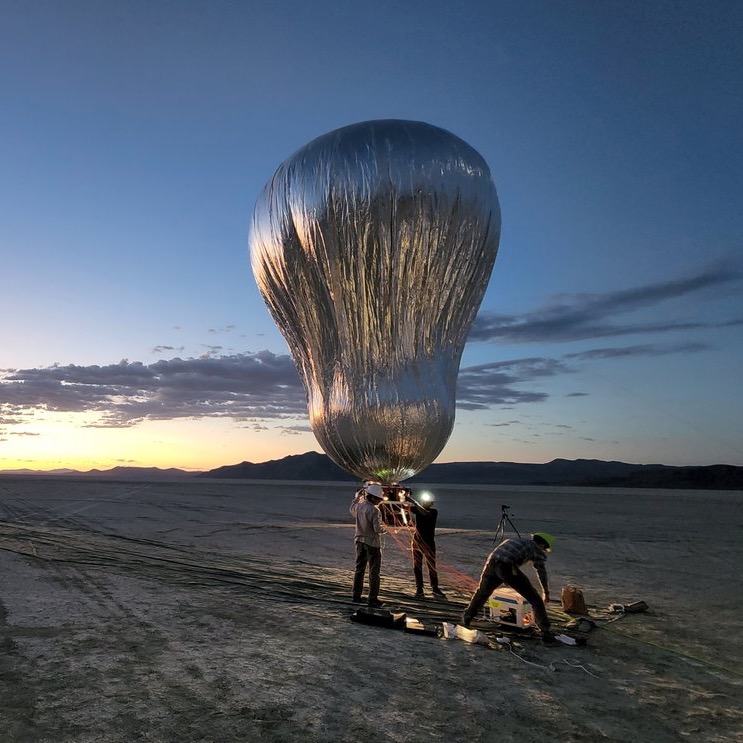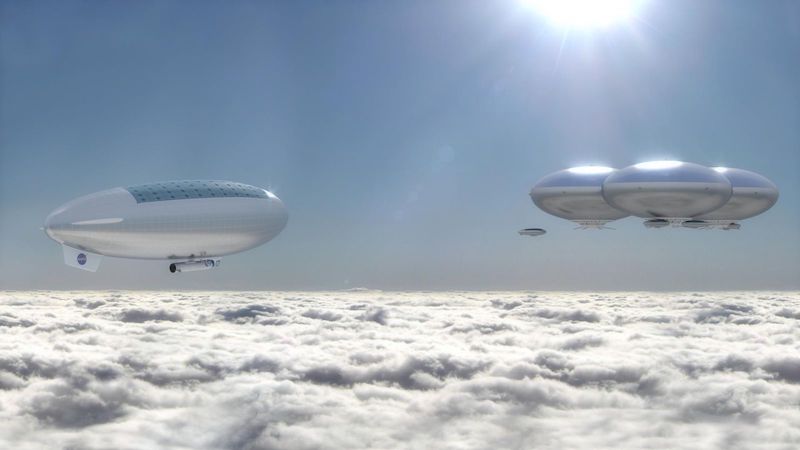
A Venus balloon?
With its searing heat and crushing pressure, Venus’ surface is hostile and unforgiving. In fact, the probes that have landed there so far have lasted only hours at most. But, along with orbiters, there might be an alternate way to explore this dangerous yet fascinating world, which orbits the sun just one step inward from Earth. And that’s with balloons. NASA’s Jet Propulsion Laboratory (JPL) in Pasadena, California, reported on October 10, 2022, that one of its concepts for an aerobot – an aerial robotic balloon – has successfully completed two test flights over Nevada.
The researchers used a test prototype, a scaled-down version of a balloon that might actually one day drift among the dense clouds of Venus.
1st Venus balloon prototype test flights
The planned Venus aerobot would be 40 feet (12 meters) in diameter, about 2/3 larger than the prototype.
A team of scientists and engineers from JPL and the Near Space Corporation in Tillamook, Oregon, conducted the test flights. Their success shows that a Venus balloon should be able to survive in the dense atmosphere of this neighboring world. On Venus, the balloon would fly at a height of 180,000 feet (55 kilometers) above the surface. To match the temperatures and densities of the Venusian atmosphere in the tests, the team lofted the test balloon to a height of 4,000 feet (1 kilometer).
By all accounts, the balloon performed just as it was designed to. Robotics technologist Jacob Izraelevitz, the principal investigator of the flight tests for JPL, said:
We’re extremely happy with the performance of the prototype. It launched, demonstrated controlled-altitude maneuvers, and we recovered it in good condition after both flights. We’ve recorded a mountain of data from these flights and are looking forward to using it to improve our simulation models before exploring our sister planet.
Paul Byrne at Washington University in St. Louis and an aerobot science collaborator added:
The success of these test flights is a huge deal for us: We’ve successfully demonstrated the technology we’ll need for investigating the clouds of Venus. These tests form the foundation for how we can achieve long-term robotic exploration high above Venus’ hellish surface.
Traveling on Venusian winds
So why a balloon? NASA wants to study the region of Venus’ atmosphere that is too low in altitude for orbiters to analyze. And unlike landers that get fried in a matter of hours, a balloon could float along in the wind for weeks or even months, drifting from east to west. The balloon could also vary its altitude between 171,000 and 203,000 feet (52 and 62 kilometers) above the surface.
The aerobot isn’t completely alone, however. It works together with an orbiter above Venus’ atmosphere. As well as conducting its science experiments, the balloon acts as a communications relay with the orbiter.
A ‘balloon within a balloon’
The researchers said the prototype is, basically, a “balloon within a balloon.” Pressurized helium fills the rigid inner reservoir. The flexible outer helium balloon, meanwhile, can expand and contract. The balloon can also rise higher or descend lower in altitude. It does this with the aid of helium vents. If the mission team wants the balloon to go up, they vent helium from the inner reservoir to the outer balloon. To bring the balloon back down, helium is vented back in to the reservoir. This causes the outer balloon to shrink and lose some of its buoyancy.
A corrosive environment
At a planned height of 180,000 feet (55 km) above Venus’ surface, air temperatures aren’t so hellish, and atmospheric pressures are less intense. But this part of Venus’ atmospheres can still be quite harsh because the clouds are filled with droplets of sulphuric acid.
To help protect from this corrosive environment, engineers constructed the balloon out of multilayered material. This material has an acid-proof coating, a metallization layer to reduce solar heating and an inner layer that keeps it strong enough to carry the science instruments. Even the seals are acid-proof. The flight tests show that the material and construction of the balloon should work on Venus as well. As co-investigator Tim Lachenmeier, CEO of Near Space Corporation, explained:
The materials being used for Venus survivability are challenging to fabricate with, and the robustness of handling we’ve demonstrated in the Nevada launch and recovery gives us confidence for balloon’s reliability on Venus.

Science in Venus’ atmosphere
Scientists equipped the balloon to conduct a variety of scientific investigations. These include looking for acoustic waves in the atmosphere that are generated by venusquakes (the Venusian version of earthquakes). Some of the most exciting analysis to be done would be that of the composition of the atmosphere itself. Carbon dioxide composes most of Venus’ atmosphere, fueling the runaway greenhouse effect that turned the planet into such an inferno on the surface. New analysis could provide important clues as to exactly how this happened. Indeed, early on, Venus used to be more Earth-like, scientists say. So what happened?
And, of course, since scientists reported discovery of phosphine in the planet’s atmosphere in 2020, the question of possible life in Venus’ clouds has found renewed interest. The jury’s still out on the origin of the phosphine – and some studies still question its existence at all – but balloon missions like this one would be ideal to conduct in-depth analysis of the clouds and possibly even identify any microscopic organisms directly.
There is a lot to discover on our closest neighboring planet. Balloon missions like this one could help uncover some of its most perplexing and challenging secrets.
Bottom line: Engineers and scientists at NASA’s Jet Propulsion Laboratory successfully conducted two test flights of a robotic Venus balloon prototype. The balloon, known as an aerobot, could one day explore Venus’ atmosphere.











